You’re going to want to click on the following images to enjoy the full-size beauty of these images unearthed at the Smithsonian Institution recently.
The museum was in the process of creating a 3D model of the Apollo 11 command capsule, the spacecraft that took the first astronauts to the moon, when curators found details in an unexpected way: graffiti and notes scribbled on the walls and panels of the spacecraft.
“The notes, figures, and a calendar, presumably improvised during the mission, tell us something about what life was like on the way to the Moon and back,” the museum’s Airspace blog says today. “The notes can be compared with audio and recorded transcripts of communication between Columbia and Houston to suggest when and by whom they were written, providing new insights into of one of humankind’s greatest adventures.”
It’s releasing the first of the images, accompanied by fascinating accounts of what they tell us.
One important detail that has puzzled experts is how much work Michael Collins, orbiting the Moon alone in Columbia, put into locating the Lunar Module (LM) Eagle on the surface below with the Command Module’s telescope. Mike Collins used this map to mark, unsuccessfully it turned out, the Eagle’s location on the Moon. On the map, we can see the estimated LM locations given to him by Houston. These are indicated with combinations of lines, arrows, circles, and one ellipse.
Now we have some new information. Just to the left of the navigation station, at which Michael Collins would have stood to access the Command Module’s sextant and telescope, is a relatively clear surface. The surface has several sets of numbers.
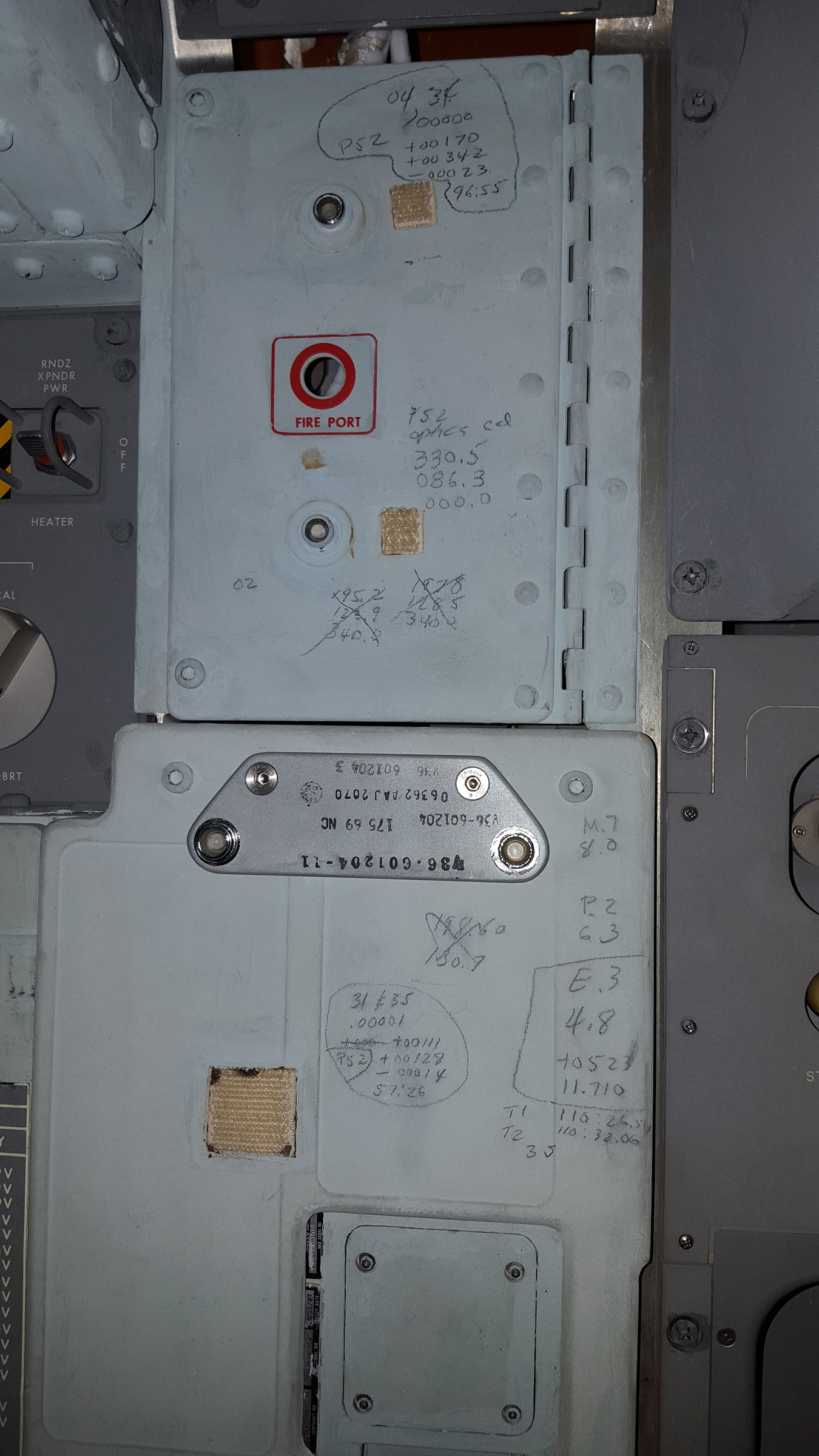 Smithsonian Institution[/caption]
Smithsonian Institution[/caption]
A careful review of the audio ground-to-space transcripts shows that all of the entries on the right side of the lower panel refer to various sets of coordinates sent from Houston, the very ones recorded by Collins on the map linked above.
You can read a detailed discussion on what was previously known about this process by our friends at the Apollo Lunar Surface Journal, (Search the page for “LAM-2”to find a discussion and links to the transcripts of ground-to-space communications of attempts to help pinpoint the Eagle on the surface of the Moon).
We are already working with the Journal to prepare a far more detailed account that will include what can be learned from these newly discovered entries.
There are plenty of similar goodies in the post and pictures.
 A photograph taken inside the Apollo 11 Command Module Columbia shows a map of stowage locations. National Air and Space Museum, Smithsonian Institution
A photograph taken inside the Apollo 11 Command Module Columbia shows a map of stowage locations. National Air and Space Museum, Smithsonian Institution
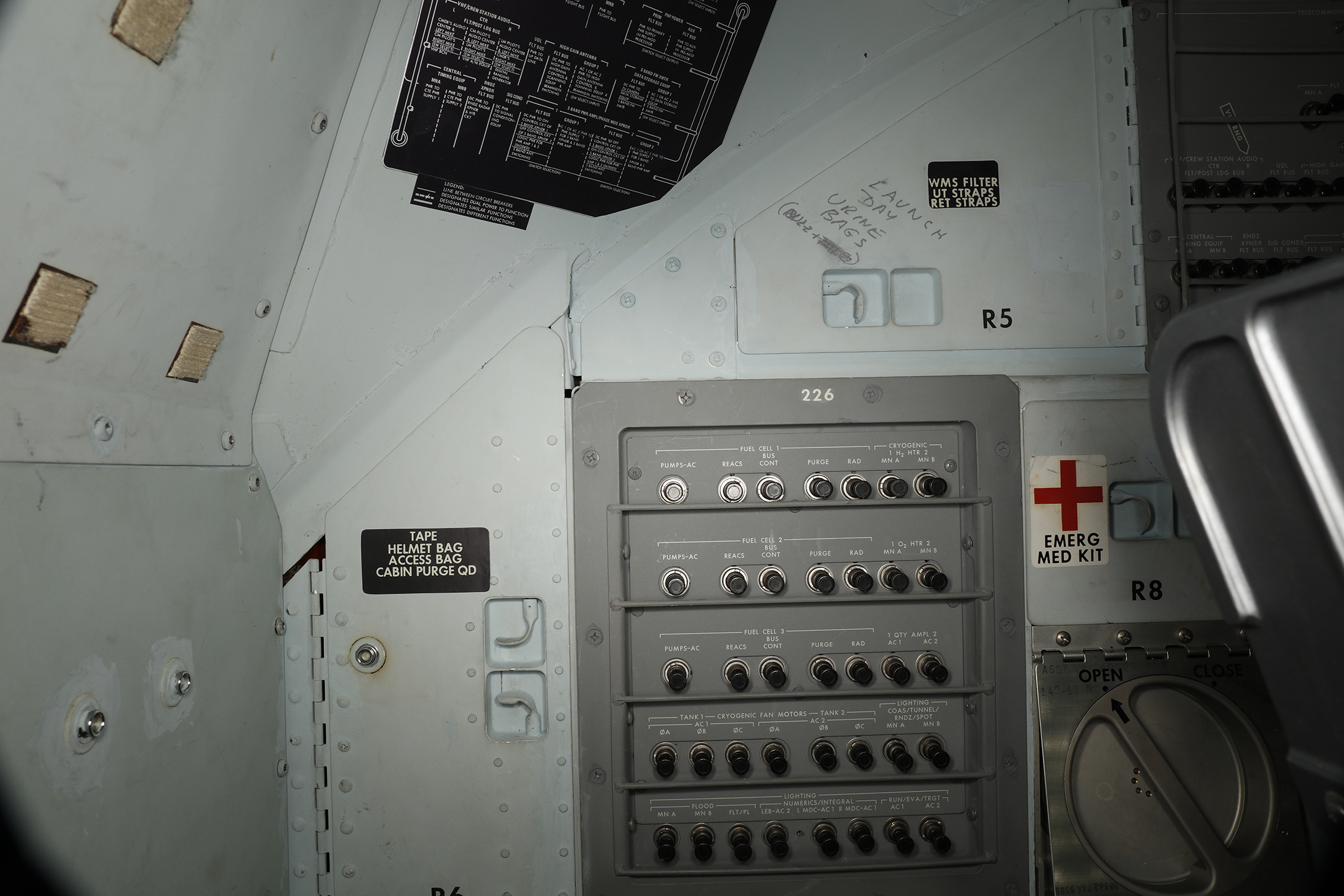 These notes illustrate improvisation during the mission and modification of pre-flight plans for what items were to be placed in each locker. The reasons suggest something about what life was like on the way to the moon and back. Smithsonian Institution
These notes illustrate improvisation during the mission and modification of pre-flight plans for what items were to be placed in each locker. The reasons suggest something about what life was like on the way to the moon and back. Smithsonian Institution
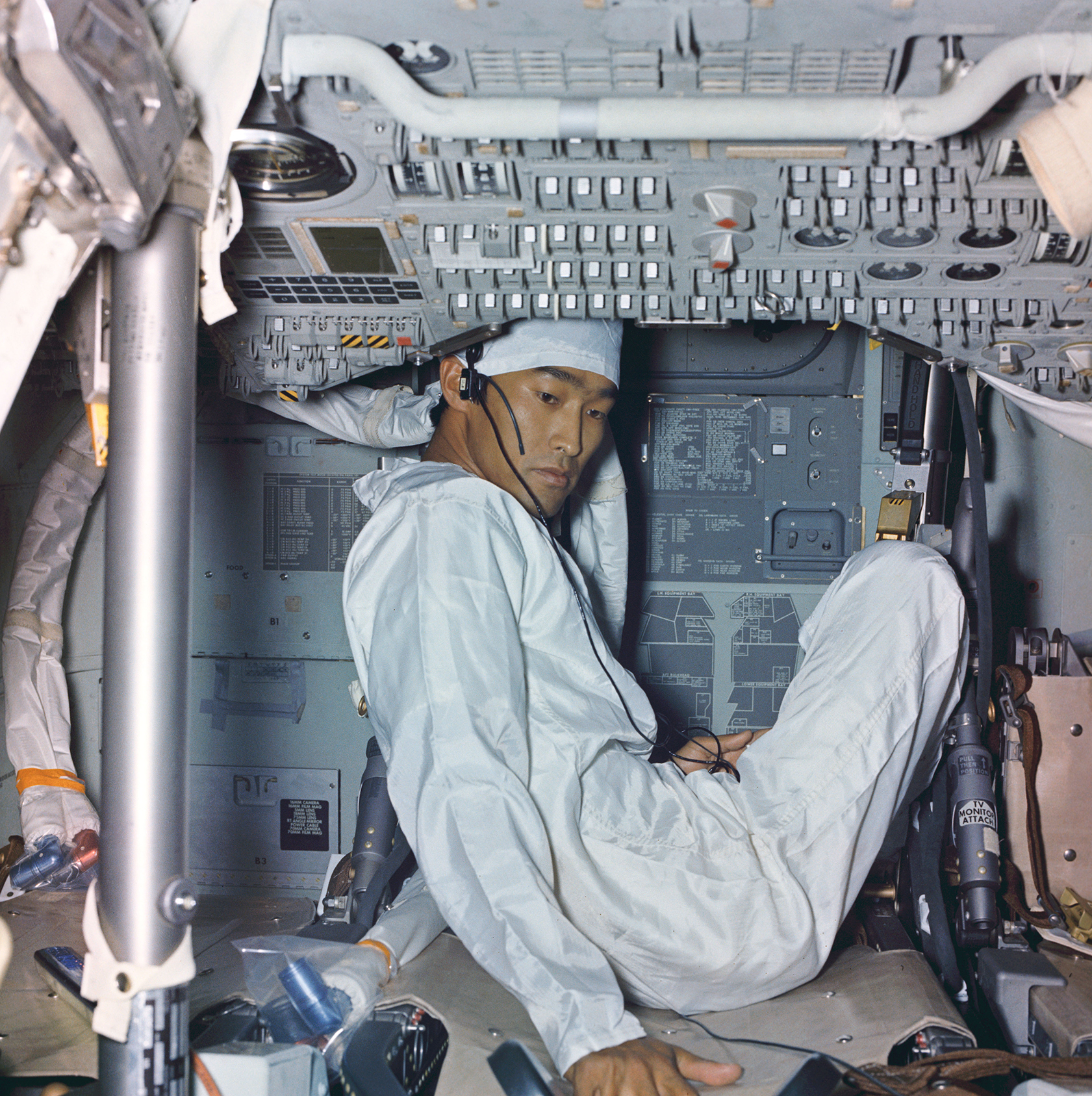 All three Apollo 11 astronauts were quarantined for several weeks following the mission at the Lunar Receiving Laboratory at the Johnson Space Center in Texas. Quarantined with them was a photographer and technician, John Hirasaki, who was given the job of removing essential items from the Command Module and decontaminating the interior. This image was taken during the quarantine period and shows the condition of the cabin shortly after its arrival back in the country. Note the calendar visible just to the left of Hirasaki. NASA
All three Apollo 11 astronauts were quarantined for several weeks following the mission at the Lunar Receiving Laboratory at the Johnson Space Center in Texas. Quarantined with them was a photographer and technician, John Hirasaki, who was given the job of removing essential items from the Command Module and decontaminating the interior. This image was taken during the quarantine period and shows the condition of the cabin shortly after its arrival back in the country. Note the calendar visible just to the left of Hirasaki. NASA
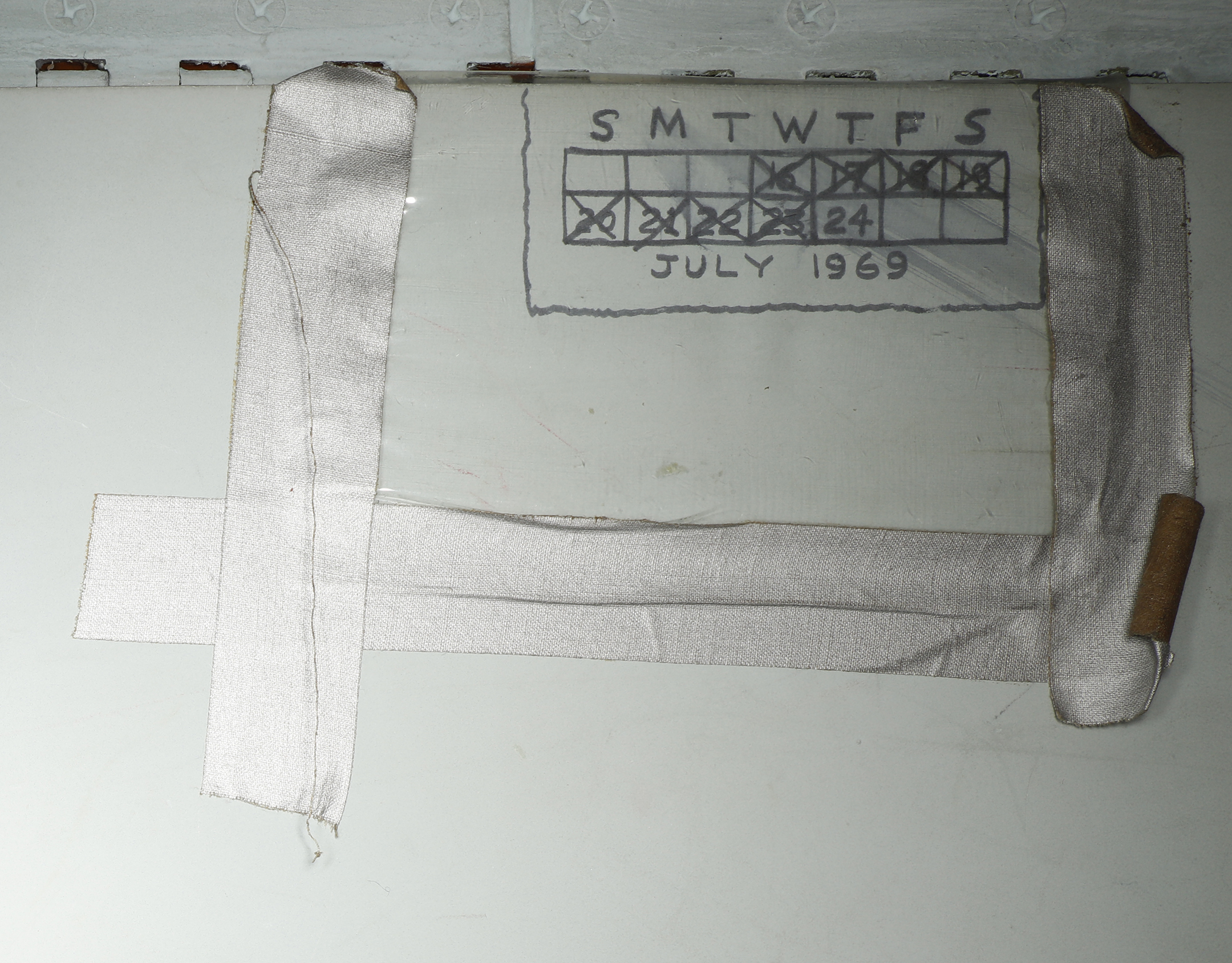 At some point during the mission, one of the astronauts created a small calendar on a smooth wall below one of the lockers. Each day of the Apollo 11 mission is crossed out except for landing day. The calendar is covered with a plastic sheet held by tape. Museum curators are in the process of trying to determine just when the calendar was drawn. Smithsonian Institution
At some point during the mission, one of the astronauts created a small calendar on a smooth wall below one of the lockers. Each day of the Apollo 11 mission is crossed out except for landing day. The calendar is covered with a plastic sheet held by tape. Museum curators are in the process of trying to determine just when the calendar was drawn. Smithsonian Institution
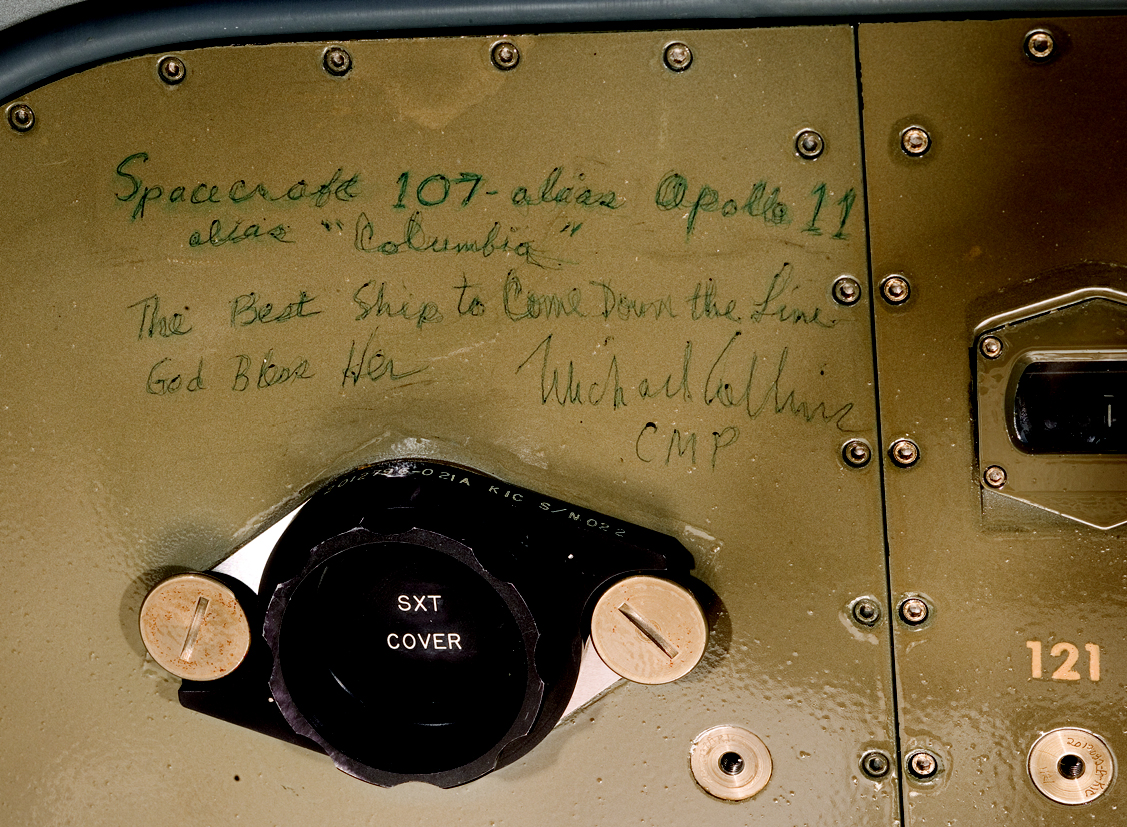 Following splashdown,while en route to Hawaii on the USS Hornet, Michael Collins crawled back into the command module (it was connected to the mobile quarantine facility by an air-tight tunnel) and wrote this short note on one of the equipment bay panels. The inscription reads:
Following splashdown,while en route to Hawaii on the USS Hornet, Michael Collins crawled back into the command module (it was connected to the mobile quarantine facility by an air-tight tunnel) and wrote this short note on one of the equipment bay panels. The inscription reads:
Spacecraft 107, alias Apollo 11, alias ‘Columbia.’ The Best Ship to Come Down the Line. God Bless Her. Michael Collins, CMP National Air and Space Museum, Smithsonian Institution
One wonders if the astronauts considered that at some point in the future, we would be sitting on our couches with a computer on our laps many times more powerful than their entire spacecraft’s technology, reading their scribbles.
We live in interesting times. So did they.
